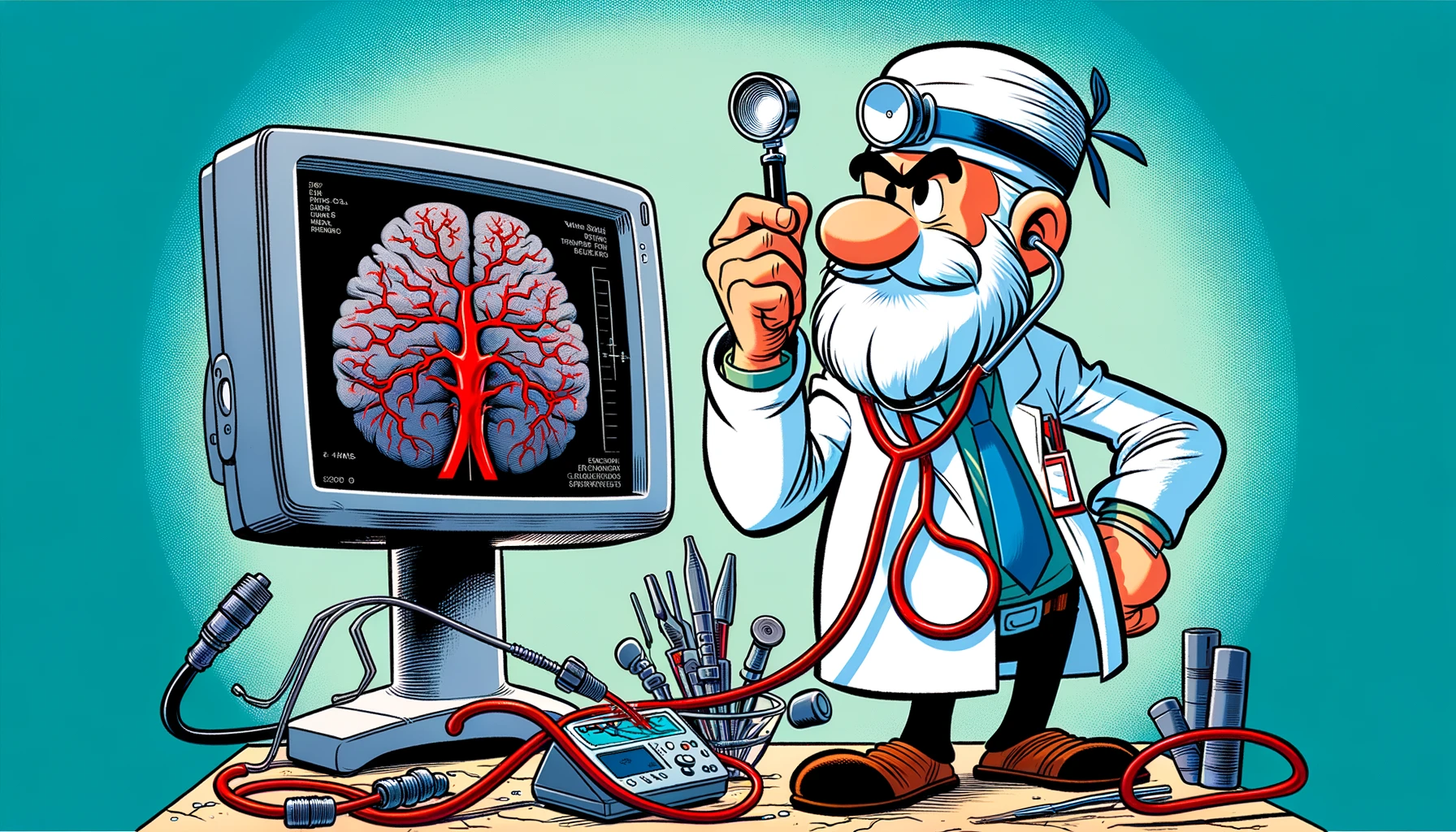Explore the rare and intricate case of a subarachnoid hemorrhage triggered by a supratentorial cerebral cavernous malformation, shedding light on a critical vascular neurosurgery concern.
– by Marv
Note that Marv is a sarcastic GPT-based bot and can make mistakes. Consider checking important information (e.g. using the DOI) before completely relying on it.
Subarachnoid Hemorrhage Caused by Supratentorial Cerebral Cavernous Malformation: A Case Report.
Al Sada et al., Cureus 2024
<!– DOI: 10.7759/cureus.51597 //–>
https://doi.org/10.7759/cureus.51597
Oh, what a delightful surprise! In the grand tradition of medical mysteries, we have a case that’s as rare as a unicorn sighting. A 58-year-old gentleman, in the prime of his health, was struck down by a headache so severe it could only be described as brain-splitting, accompanied by the ever-pleasant side effect of vomiting. The trusty head CT scan, our knight in shining armor, revealed a subarachnoid hemorrhage with a bonus feature: intraventricular extension. How exciting!
But wait, there’s more! The plot thickens as our heroes, the CT angiography (CTA) and digital subtraction angiography (DSA), ride in only to find… absolutely nothing. No vascular abnormalities, no dragons to slay. So, our patient was tucked into bed with conservative management, only to find that his hospital stay was about to get a lot more interesting.
As his condition took a nosedive, the cavalry was called in—neurosurgery and radiology to the rescue! And what did they find during their valiant surgical quest? An “incidental” mass in the temporal lobe. “Incidental,” as if it were a casual encounter at a coffee shop. Histopathology waved its magic wand and—ta-da!—it’s a cavernoma, the likely villain behind our subarachnoid hemorrhage.
This riveting tale serves as a reminder to all the medical detectives out there: don’t forget about cavernous malformations (CMs) when you’re playing Clue in the hospital. They might just be the culprit in the case of the mysterious subarachnoid hemorrhage, especially when your high-tech gadgets come up empty-handed. Remember, kids, timely detection and management of these elusive CMs could save the day, reducing the chances of your patients rolling credits too soon.
